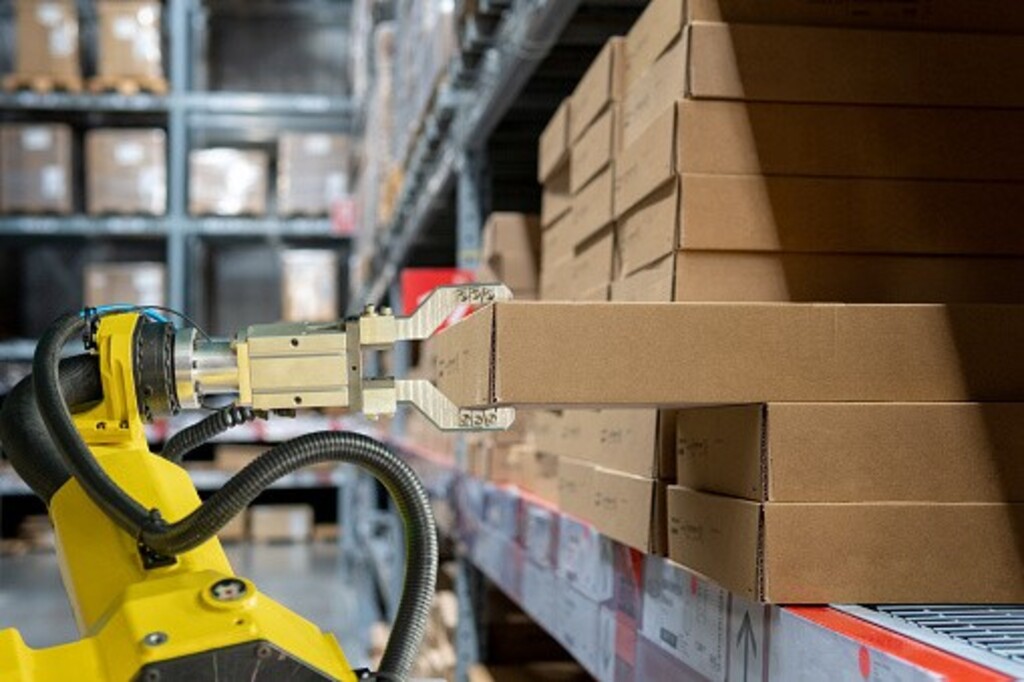
by Kate Evert | Jul 15, 2020 | Competencies, Executive Compensation, Human Capital
“If you do not change, you can become extinct!” – Spencer Johnson, Who Moved My Cheese?
Twenty years ago, I had a manager who said that my job in Human Resources would be replaced by a machine one day, but that would be a good thing. I failed to see how that was encouraging.
Over those twenty years, however, I have seen the benefits of technology in my line of work, in affording me the time to think more strategically by spending less time on tactical work. Technological innovation has brought immeasurable societal gain but has often been faced with the fear of self-preservation. If a machine can do my job faster, cheaper, AND better, what will become of ME?
We have all been asked to pivot in nearly all aspects of life lately by moving to online platforms. For example, I love my virtual workout classes that don’t involve a commute or listening to people grunt. COVID-19 has made it obvious that we rely on technology more than we ever have. The New York Times has reported that most middle-class jobs demand some technological proficiency. As of May, half of US workers were working remotely (previously 15%) and automation in many fields has steadily been on the rise.
Workers now need more advanced skills to survive, particularly in a time when unemployment numbers are steadily increasing. Even Congress has recognized how important this is and worked in a bipartisan fashion to draft the Skills Renewal Act, which would provide up to $4K in tax credits to newly unemployed workers seeking training in high-demand areas. Managerial and other strategic roles are always far harder to replace with technology. It’s a perfect time to “upskill” and get around to the training you have neglected, instead of binging the next Netflix series.
The best part about upskilling is that usually many of these skills, if not most, are portable—you can take them from job to job. Just like I take my free weights from my living room to the patio sometimes…sans grunting.

by Kate Evert | Jul 8, 2020 | Competencies, Human Capital, Skilled Labor
So last weekend, I was probably the only person I know who wasn’t ready with popcorn and our newly purchased Disney+ waiting anxiously for Hamilton to premiere. I don’t have every word memorized. Much to the dismay of my husband and daughter, I did at one point put on headphones to watch a Tik Tok during the viewing party (do I at least get points for knowing what Tik Tok is?). But for all of you Hamilton fans out there, I want you to know a few themes and a few lines have finally sunk in!
That’s why when I came across this article yesterday, I thought, how timely. As we struggle as a country with rising COVID-19 numbers, and some are quick to blame other countries, it’s important to be reminded of the hard work immigrants have put in during these trying times. Much like in Hamilton, Peter Tsai, the man who invented the N95 mask, is “Non-Stop” finding ways to use, and RE-use, them to their full potential and continue to work for the safety of others in his adopted land.
As we continue to find new ways to run businesses, care for our employees, and see our families during this pandemic, we can look to Peter as an example of how to take something we’ve already succeeded at—and know that we can always be improving it. When in doubt, remember, “Immigrants, we get the job done.” Read More Here

by Kate Evert | May 27, 2020 | Competencies, Leadership, Work Place
Recently, when speaking with another woman of a certain age, we were both lamenting the loss of civility in the workplace. This loss of civility far predates working from home, Covid-19, and Zoom Meetings. As we grappled with this loss and tried to determine just what seems to be missing from the workplace—it came to us: deference.
Our conversation and the death of deference had been sitting in the back of my mind for days. Then enter Memorial Day weekend filled with articles and stories about military heroes.
One piece that appeared in my newsfeed over the weekend was about PT 109, the ship that President Kennedy skippered in WWII. At first I couldn’t understand why there would be a new item about PT 109; when I looked more closely I realized it was a reprint of one penned in 1944, shortly after he had recovered from the injuries sustained in that accident. This piece was written more to educate the readers to the terrors of the war in the Pacific Theatre, than it was to make a hero out of a young lieutenant. But as we all know, the rest is history.
I recently read how much President Obama admired President George H. W. Bush, and visited him just three days before he passed away. I re-watched the remarks and interaction when Number 44 awarded Number 41 the Medal of Freedom, and he began those remarks with “From a decorated Navy pilot who nearly gave his life in World War II …”
It’s history. How can you have deference without history? You might still find deference in families, because in families we tend to know people’s ages and their histories. We used to have it in companies, because people stayed in organizations their entire careers. I once was with a group of Nabisco professionals and one leaned over to me and whispered of another, “He is the guy who got the bubbles out of the Oreo cream”—not only with deference, but with awe! When I was a youngster at Coopers & Lybrand, someone confided about the nicest partner I’d met, “He was the youngest person to ever make partner.”
When people worked together for longer periods of time, folks remembered who had saved your behind—and it didn’t need to be as dramatic as tugging you behind them while swimming three hours in the Pacific. It was the opposite of having to sing your own praises, people sang YOURS because everyone worked together long enough to know your strengths and weaknesses, why you could be counted on, and when you’d been a hero and saved the day.

by Kate Evert | May 20, 2020 | Competencies, Diversity, Equity, Inclusion, Economy, Human Capital, Productivity
As the world begins to reopen and summer approaches, parents are still left juggling work and children. A (welcomed) end may be in sight for remote learning, but most daycares, summer camps, and kids’ programs are closed, leaving children perpetually home for the summer. How can America be open for business when so many parents need to remain home to care for children?
The federal government has tried to help parents during this time, implementing the Families First Coronavirus Response Act (FFCRA), but the measures put in place really only benefit some parents. A recent Time article addresses this same concern. “Businesses with more than 500 employees are excluded from the mandate, and firms with fewer than 50 can ask for an exemption. That’s left more than 59 million Americans… uncovered by those government leave provisions.” Without the option to work from home, some parents are forced to resign in order to care for children.
Like the other structural flaws that Covid-19 has exposed, it’s abundantly clear that there’s a bigger problem with our current childcare system. Elliot Haspel, author of Crawling Behind: America’s Child Care Crisis and How to Fix It, says, “I think that the crisis calls for a complete re-envisioning of the American childcare system.” Hopefully, we will take what we’ve learned during these times to create solutions that work for all families. Until we do, this will limit the labor supply of those 20 to 45, which are typically key earning years. Read More Here

by Kate Evert | May 13, 2020 | Competencies, Human Capital, Productivity, Work Place
By Lisa Aggarwal
Photo Credit: ©Angelina Zinovieva
Looking for a new job? Many people have gotten one they didn’t ask for. Parents fortunate enough to remain employed have the additional unpaid role of providing full-time childcare, entertainment, and assisted education to their children. Schools are closed. Daycares are shuttered and an estimated 50% will not return to operation in the future. Try working while a two-year-old tugs on your sleeve for 8 hours…it’s great!
Many professionals are tending to their children’s countless needs during waking hours and then working all through the night. If you work outside the home, you may have no choice but to entrust your children’s care to someone else. If you are among the growing number of unemployed workers, finding childcare for when job hunting activities or once re-employed poses another real challenge. Not every household has a reliable caregiver available to remain home. Affordable and available childcare isn’t a hallmark of American culture.
There are some options for working parents, however. A recent Time Magazine article outlining worker rights during the pandemic highlights that in companies who employ 50 or more people, the Families First Coronavirus Response Act (FFCRA) could provide a solution. “The FFCRA was intended to prop up the U.S. economy during the pandemic, and includes some new or expanded worker protections that last through Dec 31, 2020. The FFCRA also extends up to 12 weeks of paid ‘expanded family and medical leave’ at two thirds’ pay to employees unable to work (or telework) because they are caring for a child whose school or place of care is closed because of coronavirus. It’s subject to caps and requires that employees have been at their company for 30 days before taking leave.”
Once areas emerge from the pandemic, will parents even feel comfortable sending their children to school and those daycare facilities that economically survive? New reports are surfacing of COVID-19 symptoms affecting children, and aggregate group settings are undoubtedly of higher risk. Childcare solutions are critical to having a population able to return to work. According to the Pro-Market, the blog of the Stigler Center at U of C’s Booth School, “While there is scope for a large rebound in employment even if schools and daycares remain closed, the economy will remain 17 million workers short of normal employment in this scenario. Furthermore, many of those working when schools are closed will only be able to do so if a spouse or partner or who would typically be working instead remains home.” It’s a tightrope we will all walk in finding a safe, yet economically viable way to proceed, and parents will likely continue to have a two-year-old tugging at their sleeve while we walk it. Read More Here

by Kate Evert | May 13, 2020 | Competencies, Human Capital, Productivity, Work Place
By Lisa Aggarwal
Photo Credit: ©Angelina Zinovieva
Looking for a new job? Many people have gotten one they didn’t ask for. Parents fortunate enough to remain employed have the additional unpaid role of providing full-time childcare, entertainment, and assisted education to their children. Schools are closed. Daycares are shuttered and an estimated 50% will not return to operation in the future. Try working while a two-year-old tugs on your sleeve for 8 hours…it’s great!
Many professionals are tending to their children’s countless needs during waking hours and then working all through the night. If you work outside the home, you may have no choice but to entrust your children’s care to someone else. If you are among the growing number of unemployed workers, finding childcare for when job hunting activities or once re-employed poses another real challenge. Not every household has a reliable caregiver available to remain home. Affordable and available childcare isn’t a hallmark of American culture.
There are some options for working parents, however. A recent Time Magazine article outlining worker rights during the pandemic highlights that in companies who employ 50 or more people, the Families First Coronavirus Response Act (FFCRA) could provide a solution. “The FFCRA was intended to prop up the U.S. economy during the pandemic, and includes some new or expanded worker protections that last through Dec 31, 2020. The FFCRA also extends up to 12 weeks of paid ‘expanded family and medical leave’ at two thirds’ pay to employees unable to work (or telework) because they are caring for a child whose school or place of care is closed because of coronavirus. It’s subject to caps and requires that employees have been at their company for 30 days before taking leave.”
Once areas emerge from the pandemic, will parents even feel comfortable sending their children to school and those daycare facilities that economically survive? New reports are surfacing of COVID-19 symptoms affecting children, and aggregate group settings are undoubtedly of higher risk. Childcare solutions are critical to having a population able to return to work. According to the Pro-Market, the blog of the Stigler Center at U of C’s Booth School, “While there is scope for a large rebound in employment even if schools and daycares remain closed, the economy will remain 17 million workers short of normal employment in this scenario. Furthermore, many of those working when schools are closed will only be able to do so if a spouse or partner or who would typically be working instead remains home.” It’s a tightrope we will all walk in finding a safe, yet economically viable way to proceed, and parents will likely continue to have a two-year-old tugging at their sleeve while we walk it. Read More Here





